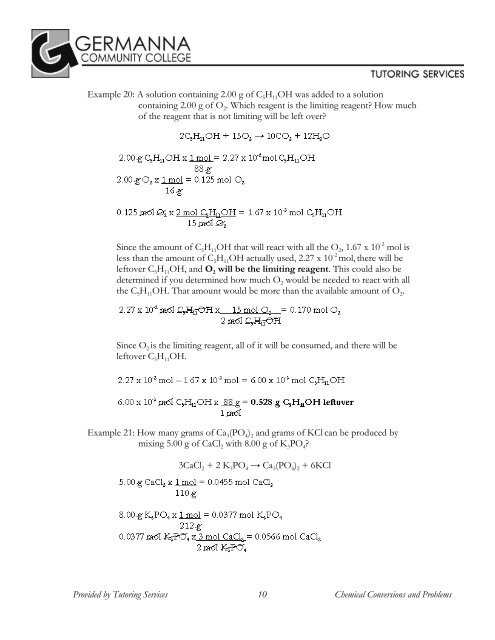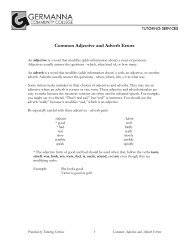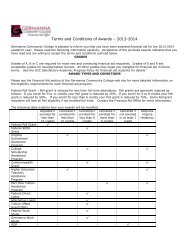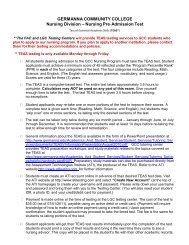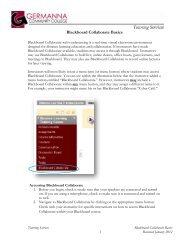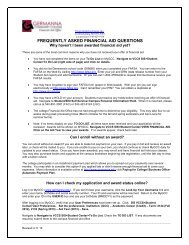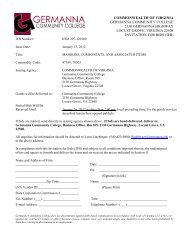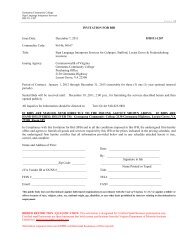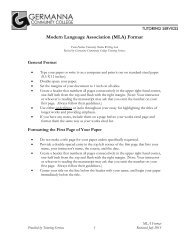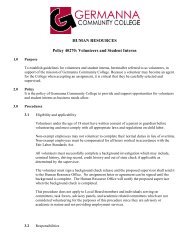Chemical Conversions and Problems - Germanna Community College
Chemical Conversions and Problems - Germanna Community College
Chemical Conversions and Problems - Germanna Community College
You also want an ePaper? Increase the reach of your titles
YUMPU automatically turns print PDFs into web optimized ePapers that Google loves.
Example 20: A solution containing 2.00 g of C 5 H 11 OH was added to a solution<br />
containing 2.00 g of O 2 . Which reagent is the limiting reagent? How much<br />
of the reagent that is not limiting will be left over?<br />
Since the amount of C 5 H 11 OH that will react with all the O 2 , 1.67 x 10 -2 mol is<br />
less than the amount of C 5 H 11 OH actually used, 2.27 x 10 -2 mol, there will be<br />
leftover C 5 H 11 OH, <strong>and</strong> O 2 will be the limiting reagent. This could also be<br />
determined if you determined how much O 2 would be needed to react with all<br />
the C 5 H 11 OH. That amount would be more than the available amount of O 2 .<br />
Since O 2 is the limiting reagent, all of it will be consumed, <strong>and</strong> there will be<br />
leftover C 5 H 11 OH.<br />
Example 21: How many grams of Ca 3 (PO 4 ) 2 <strong>and</strong> grams of KCl can be produced by<br />
mixing 5.00 g of CaCl 2 with 8.00 g of K 3 PO 4 ?<br />
3CaCl 2 + 2 K 3 PO 4 → Ca 3 (PO 4 ) 2 + 6KCl<br />
Provided by Tutoring Services 10 <strong>Chemical</strong> <strong>Conversions</strong> <strong>and</strong> <strong>Problems</strong>


